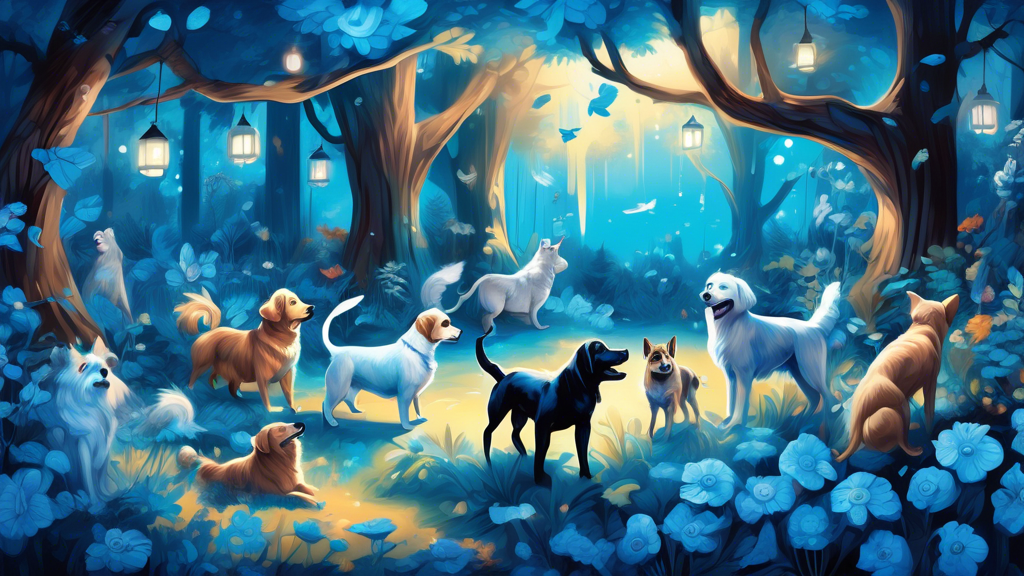A Pup’s Eye View on Blue-Eyed Beauties
Hello there, I’m Paulo, your expert guide on all things canine, especially from the height of an Italian Greyhound’s elegant viewpoint. Today, we’re engaging in a delightful discussion about one of the most mesmerizing attributes in some of our fellow fur pals: blue eyes. Oh, those deep, mystical pools that seem to hold the secrets of the skies! Let me take you through the sparkling world of blue-eyed dogs, a rarity that allures both humans and us canines alike.
Why Are Blue Eyes in Dogs So Special?
First off, let’s bark about why blue eyes feel so enchanting. You see, among us dogs, having blue eyes is quite rare. It adds a mysterious aura to the dog, making them look rather noble or whimsical. Most of us typically sport brown shades, but those with lighter, icy blue or even vivid sky blue eyes are sure to turn heads at the park — I’ve seen it with my own dark eyes!
Genetic Mystery of Blue Eyes
Let’s dig a bit into genetics (not literally, though I do love a good dig in the garden!). The color of our eyes is determined by the pigmentation in the iris. For most dogs, melanin is responsible for darker eye colors like brown or hazel. The blue-eyed trait in dogs can occur due to two main reasons: genetic inheritance and specific breeds’ characteristics.
At times, a reduction in melanin makes the eyes appear blue. This is controlled by certain genes. A scientific wag of the tail to studies like the one done by Embark Veterinary, Inc., which discovered a mutation in the ALX4 gene on canine chromosome 18 linked to blue eyes primarily in Siberian Huskies. In other dogs, such as the Dalmatian, two copies of a gene called Merle can lead to blue eyes amongst other variations.
Which Dog Breeds Might Boast Blue Eyes?
Let’s sniff around some breeds where you might see those shiny blue orbs more frequently. Not to spread rumors, but according to canine lore and verified breed characteristics, here are a few:
- Siberian Husky: Famous for their striking appearance and rugged charm, many Huskies have one or even two glacial-blue eyes, captivating hearts everywhere.
- Australian Shepherd: Don’t be fooled by the name; they originated in the West, not Down Under! These agile dogs often flash a fetching blue look.
- Weimaraner: Though not as common, these sleek, silver-grey hounds can sometimes showcase beautiful blue eyes, particularly as puppies before they change color.
- Dalmatian: Known for their signature spots and occasionally, you’ll find one with an enchanting blue eye or two, adding to their distinctive appeal.
Other breeds like the Border Collie, Shetland Sheepdog, and even the Great Dane can occasionally sport blue eyes, mostly due to the fascinating game of genetic roulette.
Health Concerns Linked with Blue Eyes
Just because something is beautiful doesn’t mean it’s without its issues — a truth even in the canine world. Blue eyes in some dogs may lead to certain health concerns. It’s something we dogs whisper about around the fire hydrant. Some of these concerns include increased sensitivity to sunlight and a possible correlation with deafness, especially in breeds where blue eyes arise from the Merle gene.
It’s wag-worthy to note that if you’re thinking of adopting a blue-eyed buddy, a trip to the vet for a thorough check-up is a wise move. It ensures their sparkling eyes are as healthy as they are captivating.
Concluding Tail Wags
While we might get a little extra attention from our human companions for our rare eye color, remember, what truly matters is the bounding love and loyalty we offer. Blue eyes or not, we’re all eager to be your fur-ever friend. So, keep those treats coming, and we’ll keep the tail wags and snuggles abundant!
Well, that’s a wrap from me today! Keep your eyes peeled, blue or not, for more exciting canine wonders. Until next time, keep chasing your tails!

